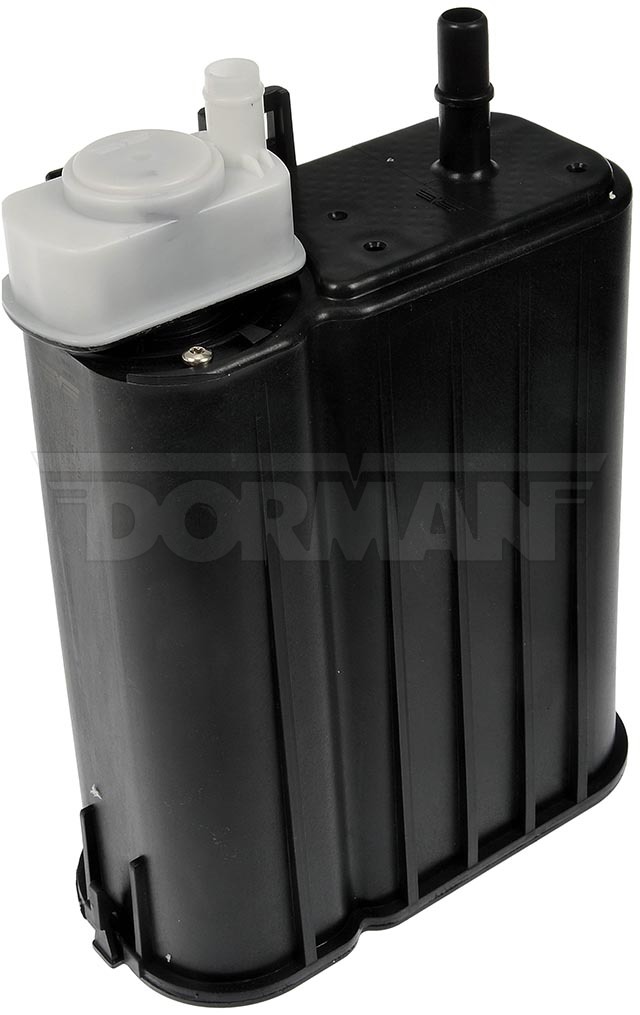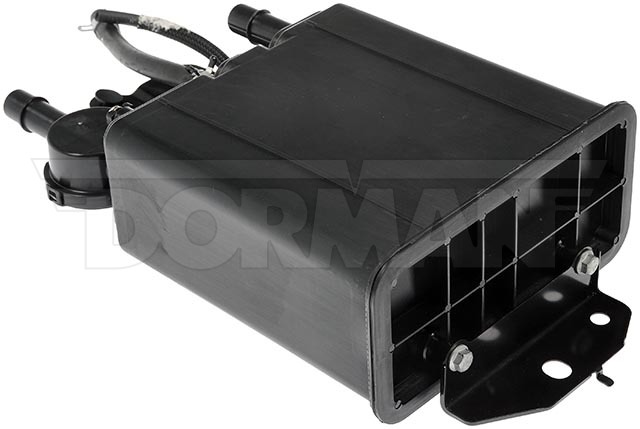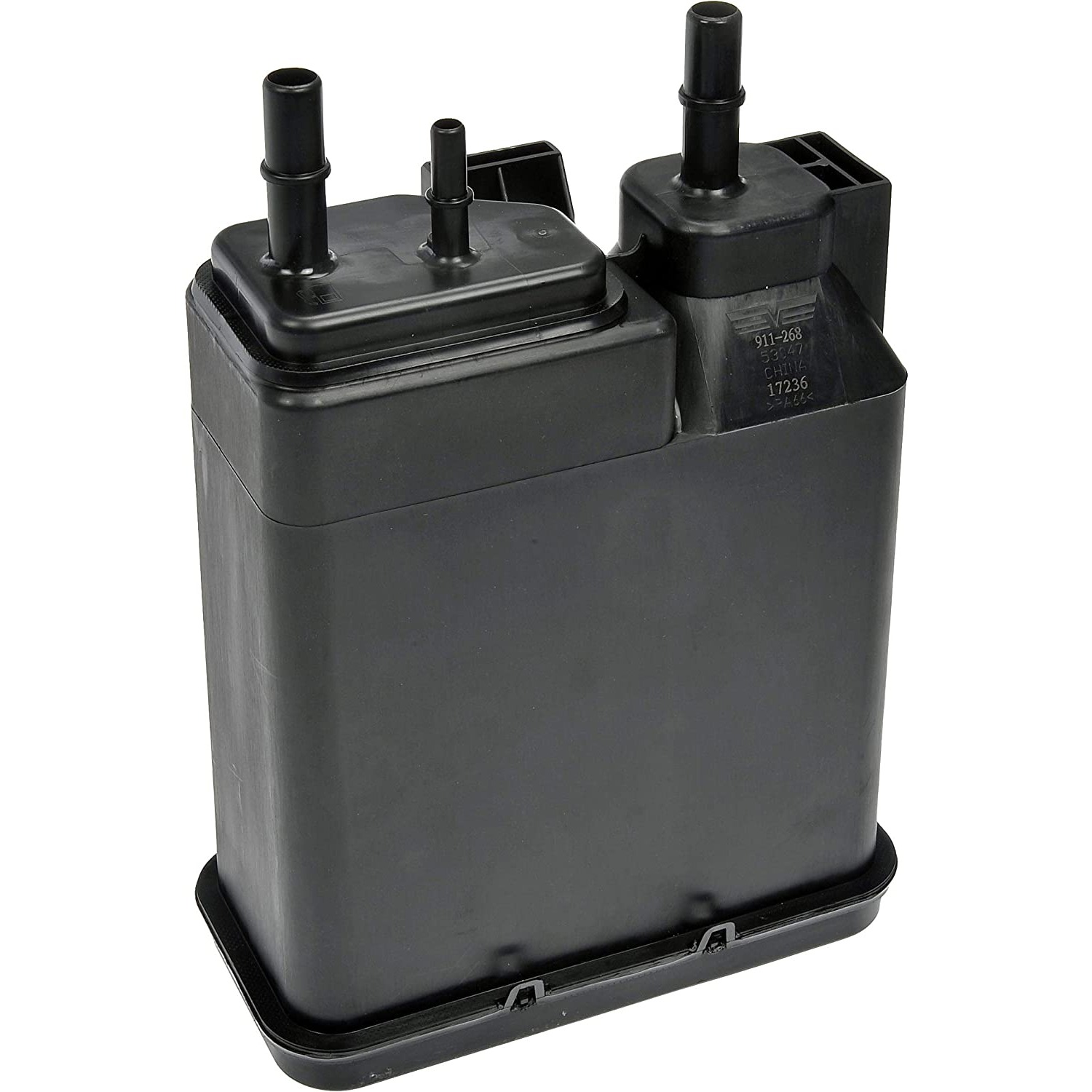Modern cars have several different emissions systems onboard, one of which is the evaporative emission control (EVAP) system. The EVAP system traps smog-forming fuel vapors and prevents them from entering the atmosphere.
A device called the vapor canister is the focal point of the EVAP system.
What is a Vapor Canister?
The vapor canister contains activated charcoal—an excellent medium for trapping fuel vapors. Vapors from the gas tank are stored in the charcoal to reduce vehicle emissions.

Of course, the canister can only hold so much fuel vapor. Once the vehicle is running and conditions are correct, the vapors are drawn into the engine to be burned. This process, which is referred to as “purging,” requires assistance from a device called the purge valve.

Your car’s primary computer (often referred to as the powertrain control module) initiates the purge process by opening the purge valve. This creates a vacuum that draws fresh air across the charcoal and pulls fuel vapors into the engine. There, the vapors are consumed as part of the normal combustion process.
The vapor canister also gets assistance from another valve—the vent valve. Normally, the vent valve is open to allow fresh air to enter the canister. The powertrain control module (PCM) commands the valve closed when running system self-tests.
What’s the Difference Between a Vapor Canister, a Charcoal Canister, and an EVAP Canister?
In some cases, the vapor canister may be referred to as a charcoal canister or an EVAP canister. There’s no difference between these three components—they’re all the same thing. The naming convention depends on the vehicle or parts manufacturer.

Symptoms of a Bad EVAP Canister
Over time, the vapor canister can lose some of its activated charcoal, become clogged, or get damaged. Typically, these issues will not affect vehicle performance or driver comfort.
Still, a faulty vapor canister can lead to a handful of noticeable symptoms, including the following:
Check Engine Light
The PCM runs a series of systematic tests, referred to as a monitor, to determine the EVAP system’s integrity. If the module detects a problem with the system, it stores a diagnostic trouble code (DTC) in its memory and turns on the check engine light.
There isn’t an efficiency code for the vapor canister like there is for, say, the catalytic converter. Instead, a faulty canister can cause a variety of EVAP-related DTCs, ranging from leak codes to purge flow faults.
Failed Emissions Test
Is emissions testing required where you live? If so, a bad vapor canister can cause your car to fail automatically by triggering the check engine light.
Fuel Smell
A fuel smell can emanate from many different parts of your vehicle. One potential source is the vapor canister. The canister may produce a noticeable fuel smell when it’s damaged or contaminated with gas.

Gas Tank is Hard to Fill
When you fill the gas tank, the displaced fuel vapors need somewhere to go. Usually, that means migrating to the canister and associated components. But if the canister is clogged, the vapors may back up into the gas tank and make refueling difficult.
Will My Car Run Bad Without a Vapor Canister?
Typically, a bad vapor canister will not make your engine run poorly—but the problem can make your car fail an emissions test. What’s more, a bad vapor canister will cause your vehicle to release more pollutants into the atmosphere.
If you’re considering removing the canister, rather than replacing it, think again. Tampering with emissions equipment is illegal and not worth the risk.
Where to Get a New Vapor Canister for Your Vehicle
If you think driving around with a bad vapor canister isn’t such a bad idea, think again. Sooner or later, you’re likely to fail an emissions test, which means you won’t be able to drive your car legally until you pass a retest. Thankfully, getting a replacement vapor canister is fast and hassle-free with CarParts.com.
Skip the long waiting time by buying a new vapor canister at CarParts.com, where you’re guaranteed fast shipping. Our strategically located auto parts warehouses make sure you get your replacement part in as fast as two business days. Our website is easy to navigate too, so you won’t have any trouble searching for the vapor canister that fits your vehicle’s specific year, make, and model.
Don’t wait until you fail your next emissions test. Check out our wide selection of quality vapor canisters now at CarParts.com.
Products Mentioned in this Guide
Shop this Project



Any information provided on this Website is for informational purposes only and is not intended to replace consultation with a professional mechanic. The accuracy and timeliness of the information may change from the time of publication.


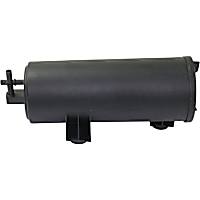 Vapor Canister
Vapor Canister
 Purge Valve
Purge Valve
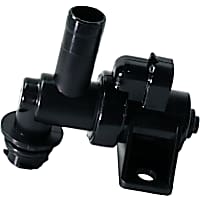 Vapor Canister Vent Solenoid
Vapor Canister Vent Solenoid
